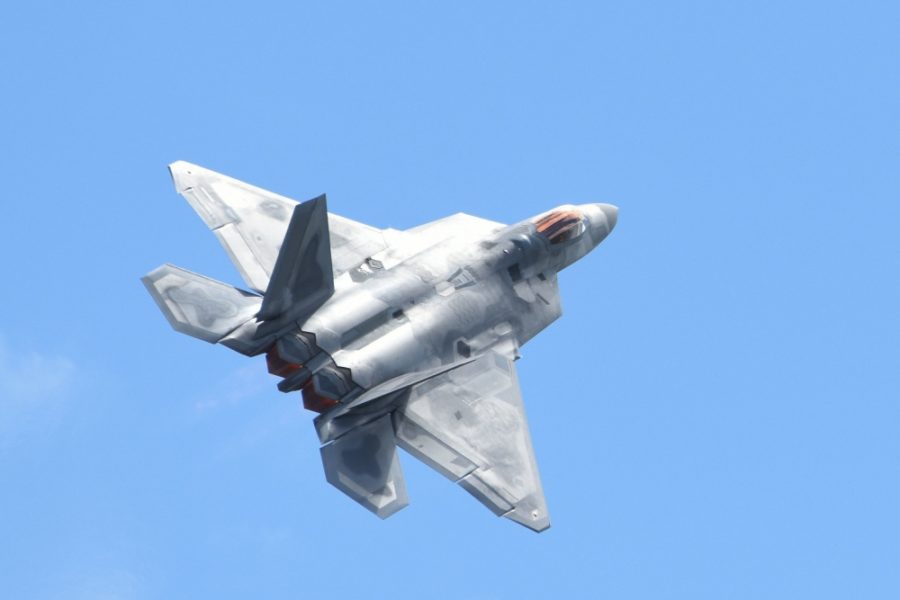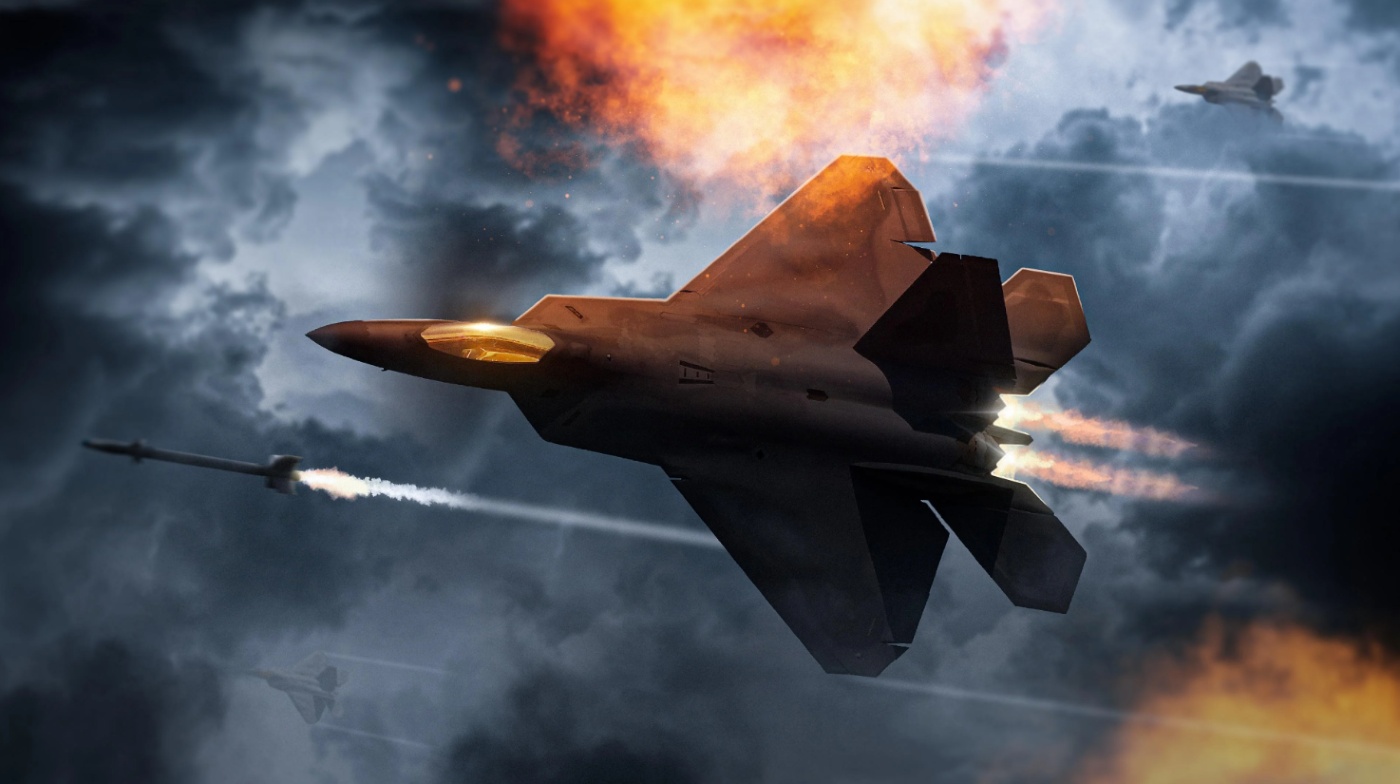In the dynamic realm of fighter aircraft acquisitions, the F-35 fifth-generation fighter jet has been securing many orders from nations across the globe. But, when it comes to the accolade of being hailed as the ultimate stealth aircraft, the spotlight often turns to the US-manufactured F-22 Raptor.
F-16 Aircraft: Ukrainian Air Force Releases Video Of Its Fighter Pilot Training On Fighting Falcons
Since its induction into active service, the F-22 Raptor has also maintained its position as the world’s most formidable air superiority fighter.
It seamlessly integrates the traditional flight performance attributes valued in non-stealth aircraft while showcasing a more minor radar signature than past and present stealth warplanes.
Yet, the US Air Force plans to reduce its inventory of F-22 fighter jets. Despite its exceptional qualities, the F-22 does not align with the USAF’s envisioned trajectory for future tactical fighter fleets.
Within its fiscal 2024 budget proposal, the Air Force formally requested to phase out several Block 20 F-22s.
The rationale behind this request is to redirect the billions of dollars saved from their maintenance towards crucial programs such as hypersonic missile development and the advancement of the Next Generation Air Dominance (NGAD) fighter.
The Air Force intends to put 32 of its 185 F-22s into storage, even though these jets are not yet 30 years old. The planes’ annual operational cost is US$485 million, which translates to around US$15 million per jet annually.
Additionally, these jets belong to the early production models known as Block 20 jets, primarily designed for training purposes and are not combat-capable.
Describing the F-22 as a “problematic asset,” Professor Justin Bronk, in his piece for the Royal United Services Institute (RUSI), highlighted that the airframe, stealth coatings, and avionics of the F-22 pushed the technological limits during its design phase.
However, this has translated into high operational costs and maintenance challenges, setting it apart from other fighter aircraft, Bronk noted.
Moreover, outdated electronic components and a software and communications architecture initially tailored exclusively for interfacing with other F-22s have compounded the challenges in upgrading the Raptor.
This has made integrating new weapons and establishing connectivity with other assets, like the F-35, a costly and intricate endeavor.
Too Coastly To Modernize?
One of the most pressing challenges confronting the US Air Force is the history of F-22 production. The production of this advanced aircraft was repeatedly scaled back and eventually terminated in 2011, resulting in a meager total of just 187 production aircraft.
This has left the Air Force with a combat fleet of around 120 F-22s, a significantly small and specialized force by US standards.
This reduced fleet size has consequences, notably eroding economies of scale and making it increasingly difficult to rationalize continued investments despite the indisputable combat prowess of the F-22.
Approximately one-third of these advanced aircraft are allocated for training, encompassing 37 Block 20 planes without significant upgrades. The remaining F-22s belong to the Block 30/35 category, refined and tailored for combat roles.
This includes 37 former Block 20s that underwent substantial upgrades to align with the Block 30 standard. The critical distinction lies in the varying capabilities between the Block 20 and 30/35 variants. The Block 30/35 aircraft, for instance, boasts a host of enhancements absent in their Block 20 counterparts.

One of the notable upgrades is the APG-77v1 radar, a feature exclusive to Block 30/35 aircraft. This advanced radar system offers an extended 400km narrow-beam search range and superior air-to-ground capabilities like synthetic aperture mapping and moving target indicators.
Regarding armament flexibility, Block 30/35 aircraft exhibit compatibility with crucial weaponry such as the Small Diameter Bomb, air-launched decoys, and the latest AIM-9X and AIM-120D air-to-air missiles.
Additionally, integrating Automatic Ground Collision Avoidance Software (AGCAS) substantially reduces crash risks during operations, another advantage exclusive to Block 30/35 aircraft.
Pilots’ transition from the Block 20 ‘training model’ to the Block 30s presented challenges owing to capability gaps between the two versions.
The Air Force formed a new training unit utilizing Block 30/35s to address this issue effectively. This move is poised to streamline the training process and bridge the capability divide effectively, ensuring a more integrated and efficient fleet management approach.
Air Force Secretary Frank Kendall previously pointed out that the cost of upgrading the Block 20 F-22s to the Block 35 configuration would exceed $50 million per aircraft.
Also, the ongoing operational and maintenance expenses would be considerably higher to keep them in line with the rest of the fleet until the F-22’s retirement. Thus, the Air Force’s decision to retire these aircraft will result in substantial savings.
The service has already revealed that it intends to allocate all the funds saved from retiring these aircraft toward developing the F-22’s successor, the Next Generation Air Dominance (NGAD) family of systems.
Maintaining F-22 Credibility
The F-22 was introduced into service in the early 2000s. Since then, several upgrades have been relatively limited compared to the numerous upgrades received by older fourth-generation aircraft like the F-15 and F-16.
The service has been awarding contracts to ensure the F-22 remains combat-ready to effectively address potential modern battlefield threats.
For instance, BAE Systems announced on September 26 that it had secured a five-year contract from Lockheed Martin to maintain the AN/ALR-94 advanced digital electronic warfare (EW) system used in the F-22 Raptor.
Being the original manufacturer of this EW system, BAE Systems has played a crucial role in its life cycle management since the program’s initiation.

They oversee repairs and upgrades, manage supplier logistics, maintain test equipment, and provide depot-level spares and engineering support.
These actions are vital for maintaining the EW system’s readiness and relevance in fulfilling the F-22’s air dominance missions.
Dan Harrington, Director of F-22 Programs at BAE Systems, stressed the company’s dedication to delivering mission-critical capabilities to support the warfighter. He affirmed, “We’re investing in sustainment excellence to keep Raptors and other platforms ready to engage modern threats and outpace our adversaries.”
“BAE Systems’ proactive sustainment practices have consistently delivered high readiness rates and reduced life cycle costs. Recent investments in a new state-of-the-art F-22 repair facility in Merrimack, New Hampshire, demonstrate the company’s commitment to agile, cost-effective sustainment support,” the company said.
This contract underscores the collaborative efforts of BAE Systems, Lockheed Martin, and the US Air Force in ensuring that the F-22 Raptor remains a formidable asset in contested airspace. It also marks another step forward in maintaining the readiness and efficiency of this state-of-the-art fighter aircraft.
- Contact the author at ashishmichel(at)gmail.com
- Follow EurAsian Times on Google News




